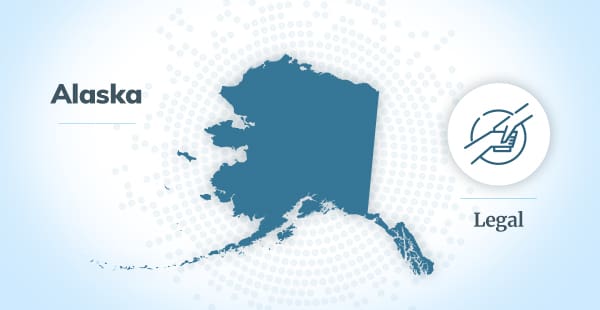01. Alaska Law Firms
Top Mesothelioma Law Firms in Alaska
Asbestos victims in Alaska can seek legal support from mesothelioma law firms. These law firms represent victims who have been impacted by asbestos-related diseases. Mesothelioma attorneys have a proven track record and experience with asbestos litigation. They can lead their clients through the entire legal process.
These lawyers also understand the impact of mesothelioma on asbestos victims. They work to make the litigation process as easy as possible for their clients. For example, they often travel to their clients for meetings and to help gather documents. Top mesothelioma law firms equipped to represent Alaskan asbestos victims include:
Working with a mesothelioma law firm has several benefits. Asbestos attorneys have experience with asbestos litigation and access to many resources to help them build successful cases. Lawyers at these firms have proven track records holding asbestos companies accountable for the harm they caused and securing compensation for their clients. These lawyers can also determine if additional compensation may be obtained by filing claims with asbestos trusts.
Resources for Mesothelioma Patients
02. Filing Lawsuits in Alaska
Filing Mesothelioma Lawsuits in Alaska
Asbestos exposure in Alaska has resulted in many instances of mesothelioma in the state. Individuals diagnosed with mesothelioma may be eligible to file lawsuits for compensation. Alaskan residents can work with an asbestos attorney to understand their filing options.
According to the Centers for Disease Control and Prevention (CDC), Alaska recorded 149 cases of mesothelioma from 1999 to 2020. During the same time, about 111 Alaskans died from mesothelioma. Across all counties, Anchorage Borough had the highest number of mesothelioma deaths, with 56 recorded.
Asbestos lawyers have the experience to help Alaskan mesothelioma patients and their loved ones file lawsuits and claims.
Who Is Eligible to File a Mesothelioma Lawsuit in Alaska?
Individuals who develop illnesses after asbestos exposure in Alaska may file personal injury lawsuits against the responsible asbestos companies. Family members of asbestos victims who have died from their asbestos-related illness may file wrongful death lawsuits.
In Alaska, asbestos was used in a variety of industries and occupations, exposing workers at these sites. Residents and non-asbestos workers may have also experienced exposure.
Although asbestos use largely ended by around 1980, the mineral is not banned and may still remain in older buildings. Individuals may still risk exposure to asbestos-containing materials present in older homes, schools and commercial buildings.
Risk of exposure is also possible at jobsites where managers and owners do not follow asbestos laws and regulations. Examples of asbestos exposure in Alaska include:
- In 2021, a management company pleaded guilty to improperly conducting renovations in an old boiler room at the Northern Lights shopping center in Anchorage. Building owners hired a contractor who was not certified in asbestos abatement. Further, they did not inform the contractor about the possible presence of asbestos, placing the contractor’s workers at risk of exposure.
- In 2009, Copper River Seafoods began renovating and demolishing two buildings in Anchorage without advising employees of asbestos-containing materials in the walls, ceiling and floors. This work resulted in the release of friable chrysotile asbestos inside and outside the buildings.
As a result of exposure, individuals may be at risk of developing mesothelioma or another asbestos-related disease. Alaska residents with mesothelioma may be able to file a lawsuit against companies and organizations responsible for exposure.
Alaska residents living in the following towns and cities have filed mesothelioma lawsuits to seek compensation from manufacturers and distributors of asbestos:
- Anchorage, AK
- Chugiak, AK
- Delta Junction, AK
- Homer, AK
- Palmer, AK
- Ward Cove, AK
Deadlines for Filing a Mesothelioma Lawsuit in Alaska
Alaska state law limits the time asbestos victims and families have to file a lawsuit. Individuals should consult with a mesothelioma attorney in Alaska after a diagnosis or death to provide time to gather evidence.
Each state has its own statutes of limitations for personal injury and wrongful death lawsuits. These laws set up the time frames for filing a lawsuit.
Besides lawsuits, individuals may qualify for different mesothelioma claims. These include asbestos trust fund claims and veterans benefits claims. An Alaska mesothelioma lawyer can help patients and their families identify companies responsible for exposure with asbestos trust funds. Attorneys can also help individuals determine their eligibility to file a lawsuit and the best state to file in.
03. Alaska Settlements & Verdicts
Mesothelioma Settlements in Alaska
Mesothelioma victims and their family members may be eligible to receive compensation from settlements. Financial compensation can help individuals pay medical bills, recover lost wages and hold companies liable for asbestos exposure.
Below are a few settlements compensating Alaska asbestos exposure victims:
- $2 million for a 54-year-old Army veteran and mechanic
- $1.9 million for a 75-year-old union welder and laborer (Kaiser Gypsum Company Inc.)
- $1.2 million for a 51-year-old construction worker and carpenter
- $1.1 million for a 78-year-old electrician (Brooklyn Navy Yard)
- $800,000 for a 78-year-old Navy veteran (Norfolk Naval Shipyard)
- $700,000 for a 35-year-old laborer with secondary exposure
- $600,000 for an 85-year-old electrician
Note: Each lawsuit is different, and prior results do not guarantee a similar outcome in the future. Contact a reputable Alaska mesothelioma lawyer to understand how much compensation you may be eligible to receive.
04. Asbestos Laws in Alaska
Alaska Asbestos Laws & Regulations
Asbestos poses a health risk when the mineral is moved or disturbed, causing fibers to become airborne. Federal asbestos laws established by the Occupational Safety and Health Administration (OSHA) and the Environmental Protection Agency (EPA) apply in Alaska.
Alaska also has its own regulations for handling asbestos found in buildings, construction materials and naturally occurring deposits. Different departments work to ensure safe workplaces and air quality in the state.
- The Alaska Department of Environmental Conservation (ADEC) oversees the disposal of asbestos-containing materials.
- The Alaska Department of Labor and Workforce Development (DOLWD) administers regulations surrounding the certification and training of asbestos workers.
- The Alaska Occupational Safety and Health (AKOSH) administration performs jobsite inspections and issues citations for violations of standards.
Alaska Laws Affecting Asbestos Litigation
Alaska has specific state laws around asbestos lawsuits. Laws impacting asbestos litigation in Alaska include:
- Limited liability related to gravel with asbestos: Alaska has a law that shields gravel companies from liability for asbestos-related injuries. Under the law, companies, landowners and others may extract and use gravel containing a certain amount of naturally occurring asbestos.
- Statute of repose: Alaska has a 10-year statute of repose for injuries and deaths resulting from construction projects. A statute of repose is similar to a statute of limitations, but the timeline begins with a specific event instead of an injury. In Alaskan law, the completion of a construction project is the event in question.
With regard to the gravel law, in 2003, authorities found airborne asbestos fibers in Ambler, Alaska. Chrysotile asbestos was found in concentrations of up to 10% in an Ambler gravel pit used as a source of construction gravel for the state since the 1960s.
The gravel pit is now closed. However, in 2012, Alaska passed legislation allowing the continued use of gravel containing specific amounts of naturally occurring asbestos. This legislation was passed to allow certain construction projects to go forward that had been put on pause because of asbestos in gravel. The law protects certain people, such as state officials or gravel suppliers, from being held liable for asbestos-related injuries.
Mesothelioma attorneys in Alaska can provide representation to anyone affected by asbestos and help victims navigate Alaska’s asbestos laws.








